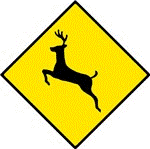United States Department of Agriculture, National Wildlife Research Center: Symposia

Human Conflicts with Wildlife: 2002 Symposium
Date of this Version
8-1-2000
Abstract
Although several piscivorous birds are involved in depredation conflicts with southern aquaculture, the double-crested cormorant causes some of the most widespread and significant problems to catfish, the dominant industry. Unlike other agriculture commodities, catfish losses due to predation cannot be directly measured, so we review several approaches taken to estimate these losses. Although these approaches are valid for predicting the costs of simply replacing these fish at the time of predation, they have been criticized because they failed to consider the functional relationships between predation and output parameters at harvest. Recent controlled experiments are reviewed that confirm previous estimates of predation losses and start to examine output parameters at harvest with and without cormorant predation. In the latter case, enterprise budgets suggested that the 20% production loss observed at harvest from simulating 30 cormorants feeding at a 6-ha catfish pond for 100 days (500 cormorant-days/ha) resulted in a 111% loss of profits. These results confirm previous estimates suggesting that efforts to repel these birds from ponds are well justified and are economically reasonable. We review cost estimates of the most widely used method at catfish farms, “the harassment patrol” and the limitations of this procedure. In addition to the harassment patrol, most Mississippi catfish farmers in recent years have participated in a cormorant roost dispersal program each winter. We review the costs of these programs and the benefits incurred. Although very little attention has been paid to the effect of changes in culturing practices on mitigating predation losses, increasing fish stocking rates is a current trend in the industry. We examine data from research ponds stocked at these high fish densities and relate various levels of observed fish mortality to production at harvest. Assuming that the observed fish mortality was caused by cormorant predation, regression models suggest a higher threshold for cormorant predation impact at these stocking rates.

